A large Oregon power line construction company is setting impeccably high standards in helicopter operations and safety, establishing a dedicated, integrated aviation department to support their main business. The Wilson Construction Company is a superb example of how an aviation support component can be structured and operated.
The Company
Almost seventy years ago, in 1952, Matt Wilson first started the Wilson Construction Company in Troutdale, Oregon, installing power lines for the Rural Electric Administration with his small crew. The company has steadily grown over the years and is now one of the largest privately owned utility construction companies in the region, with offices in Washington, Oregon, California, New Mexico, Arizona and Pennsylvania.
Wilson Construction’s work varies greatly in scope, size and complexity, including new construction, repair, general maintenance and rebuild, with jobs involving anywhere from a dozen or so staff members to over a hundred. The Wilson family grew as the business matured and Matt’s son Don is the current president, while Stacy Wilson has taken on the vice president’s role to become the third generation of Wilsons involved in helming the company. Specializing in construction, maintenance and repair of electric power transmission infrastructure, Wilson Construction has also expanded into its own helicopter operation in support of that primary mission. Ron Stewart joined Wilson Construction in 2011 and is now Director of Helicopter Operations. He explained the genesis, evolution and operation of the company’s aviation department.
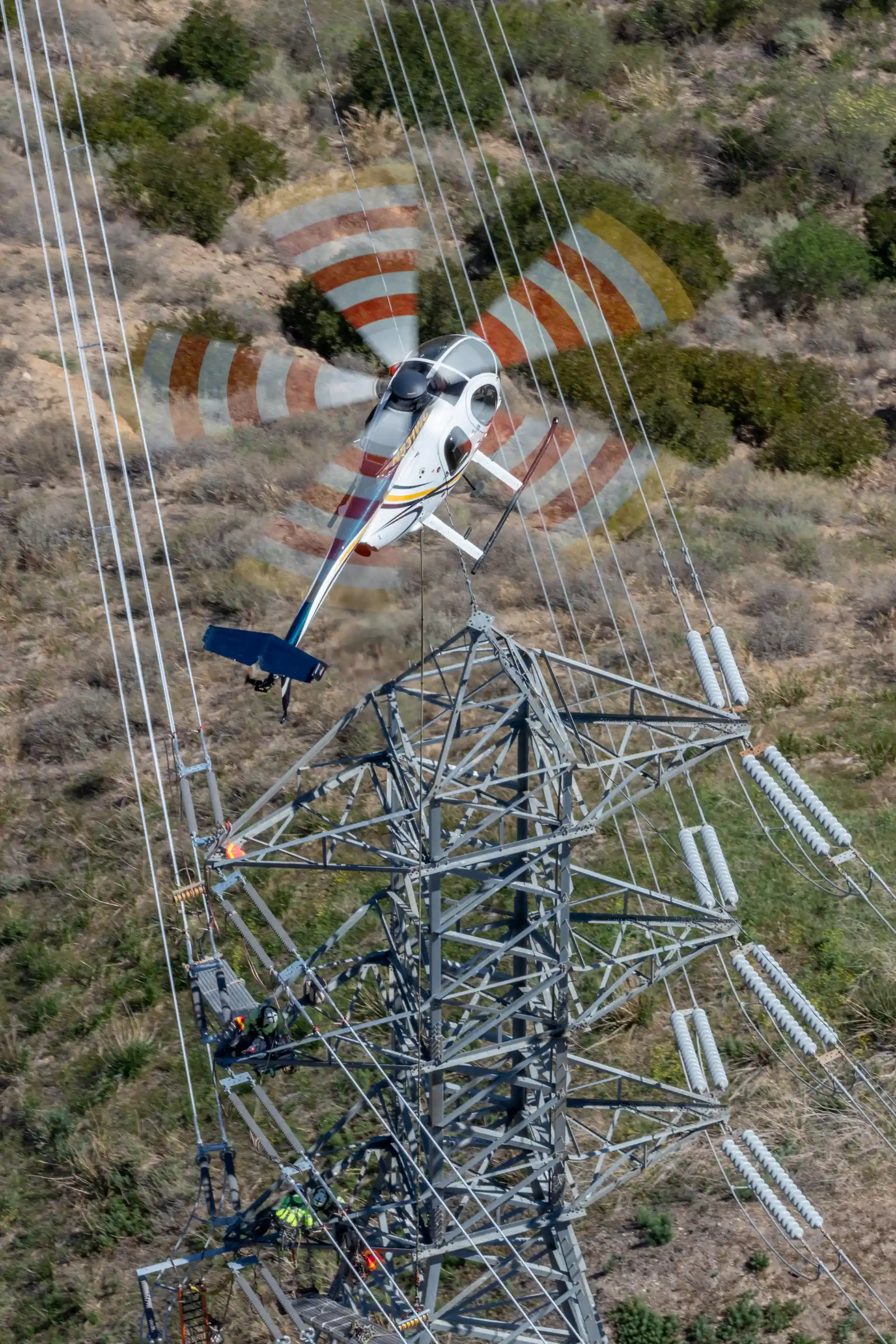
First Helicopter
According to Stewart, Wilson’s first real helicopter involvement was around fifteen years ago, when the company obtained a single MD500E to support a major power line construction contract in Alaska. “That’s what started Don thinking about including helicopters in the company and integrating helicopter operations right in,” he explained, continuing, “One of the biggest things that I think makes Wilson’s unique is that we’re really the only company that works our helicopters exclusively in our own construction business. Our flight department only flies Wilson Construction personnel, on Wilson’s contracts.”
He pointed out that the significance of that is that the consistency in training and familiarity with colleagues and each other’s work roles makes for a much more predictable, comfortable and therefore safer operational environment. “The pilots, the linemen, the foremen and superintendents; power line work is all they do and they’re very familiar with everybody involved and each task being carried out.” Stewart also stressed that of equal significance, flying only on Wilson’s own work and not for any other organization or client eliminated the pressure to complete a task for a customer in a competitive environment, where the client might be inclined to replace them if the pilot felt uncomfortable or unsafe completing a particular mission. As Stewart puts it, “What’s really good for our guys is that if they have to say no to a particular mission, they know they’re not going to get any push back or be replaced and that’s such a positive environment for them, knowing they have the ability to say no.”
Growing the Fleet
Since that first 500E in 2006/2007, the Wilson fleet has grown to six aircraft, with three MD500E models and three of the newer MD530Fs. The 530F offers improved hot and high performance that is a definite safety advantage, as the company carries out work in many areas of mountainous terrain and high temperatures, such as California. Stewart elaborated on the move towards the F model, “The way that we view the enhancements offered by the F is not necessarily that we’re going to increase our capabilities, it’s that we retain our same level of capability but increase our safety margins.” He added that it not only gives the pilot a greater power reserve, but the engine is also not working as hard, and reliability increases as a result. Wilson’s has only operated the MD500 series aircraft and Stewart cited the reasons for sticking with the type. “The 500 has a proven, simple airframe. The controls, the systems and virtually everything on that aircraft can be maintained in the field with basic tooling and that enables us to maintain high levels of availability,” he stated. “The 500 has always been known for its agile flight characteristics and that maneuverability is a big plus for our work. The visibility is great and aids good situational awareness for the pilots and observers, while the small size of the aircraft is a great feature, and we find that is very conducive to our type of work.”
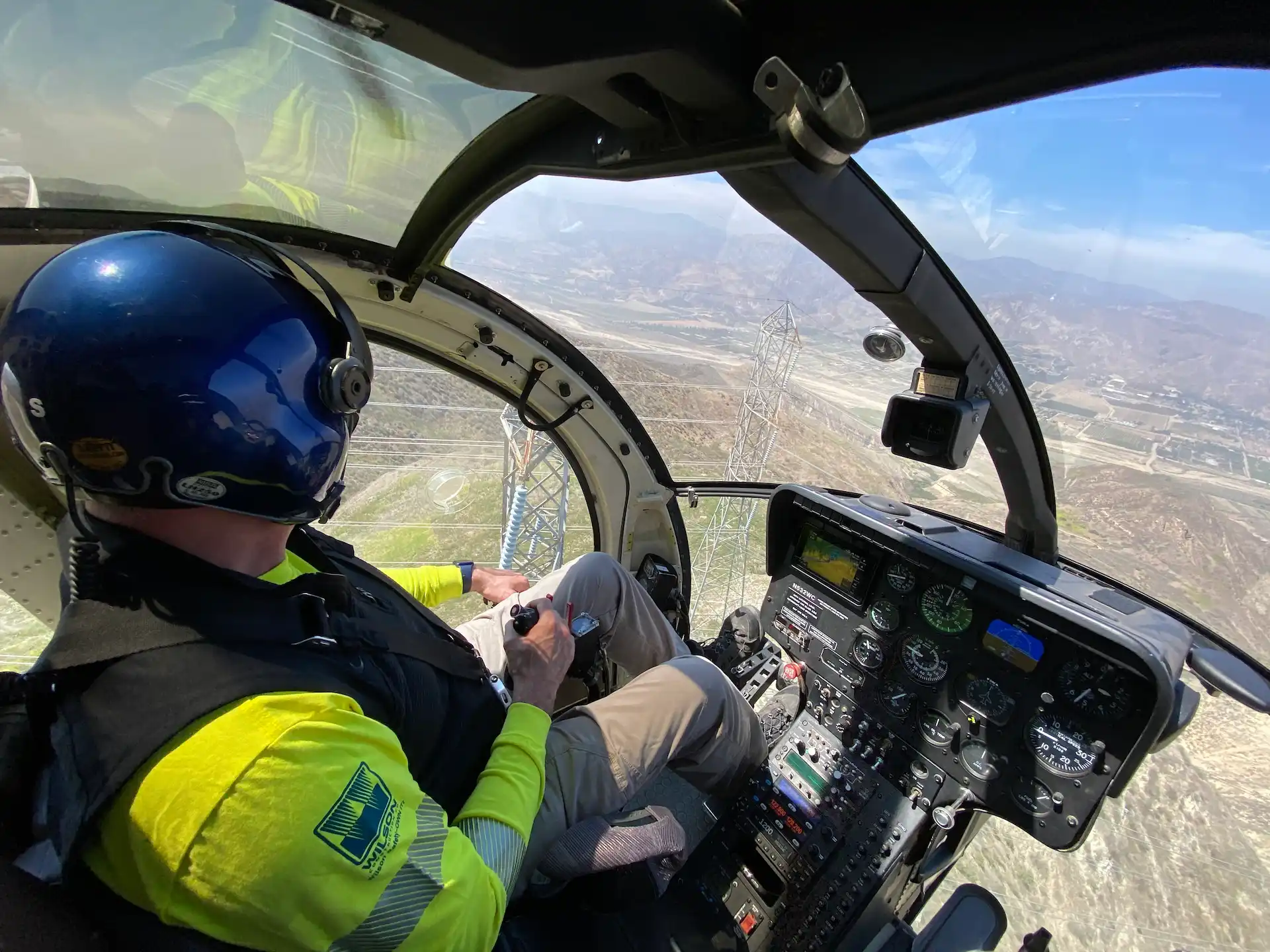
On every job utilizing the helicopters, the crew includes an A&P (airframe and powerplant) or IA (inspection authorized) mechanic who often act as part of the helicopter support crew as the refueller but if not, they will always be engaged somewhere on the worksite and available whenever required to attend to any aircraft maintenance or repair needs. Stewart considers that MD Helicopters’ standard of customer service and support has been consistently improving over the last few years and he commented that they had gone out of their way to ensure they provided the best equipment possible for Wilson Construction’s fleet and missions. “They’ve been very responsive to any concerns that have arisen,” he observed. “They do what they do very well, and the aircraft’s simplicity is paramount for us. This is a proven airframe, we know what it does in the wire environment, we have a lot of experience with the 500s, and we know what to look out for, what components to watch carefully and what spares to keep on hand. Sometimes, going to a newer, fancier, shinier airframe may not bring great results because there are too many unknowns.”
Specialized Work
The entire Wilson fleet is equipped with a dual hook kit certified under Part 27.865 for HEC (human external cargo) and a number of STCs are in place for class C side-pull operations and external hardpoints. Those features fitted on the Wilson machines enable them to carry out a lot of the highly specialized work that is required. “For example, we can pull sock line and we can transport linemen on the platform outside the airframe. Most other airframes do not currently have those tools available,” Stewart observed.
A longline is typically used for placing workers on or in the power line structures or relocating them from one structure to the next. In instances where linemen are working while attached to the aircraft, positioning devices such as the ARS chair (air reach seat) or clipping ladder are also attached to the line. While working from a positioning device, the workers remain secured in their harness and securely attached to the aircraft for safety. “The chair just allows him to position himself so he can work hands-on from the end of the line,” Stewart explained. “That’s different from just being flown to a structure and the chair gives them a safer and more comfortable place from which to work. Their feet are planted, and they have more ability to control themselves in space than they do when just hanging on the end of a line.” Longlines are usually either 75ft or 50ft and two lines are used simultaneously. One line is exclusively for HEC and the second line is for cargo. Although similarly rated, the two lines differ slightly in that the HEC line is slightly more robust, offering a higher abrasion resistance and melting point to reduce the risk of failure from chafing under tension and pressure. Stewart explained that line failures are much less likely to be from snapping under load, than from fibers melting due to heat build-up while being chafed under tension. Wilson’s longlines are all of synthetic construction and the HEC-specific lines receive a higher level of care to minimize any degradation from dirt or abuse.
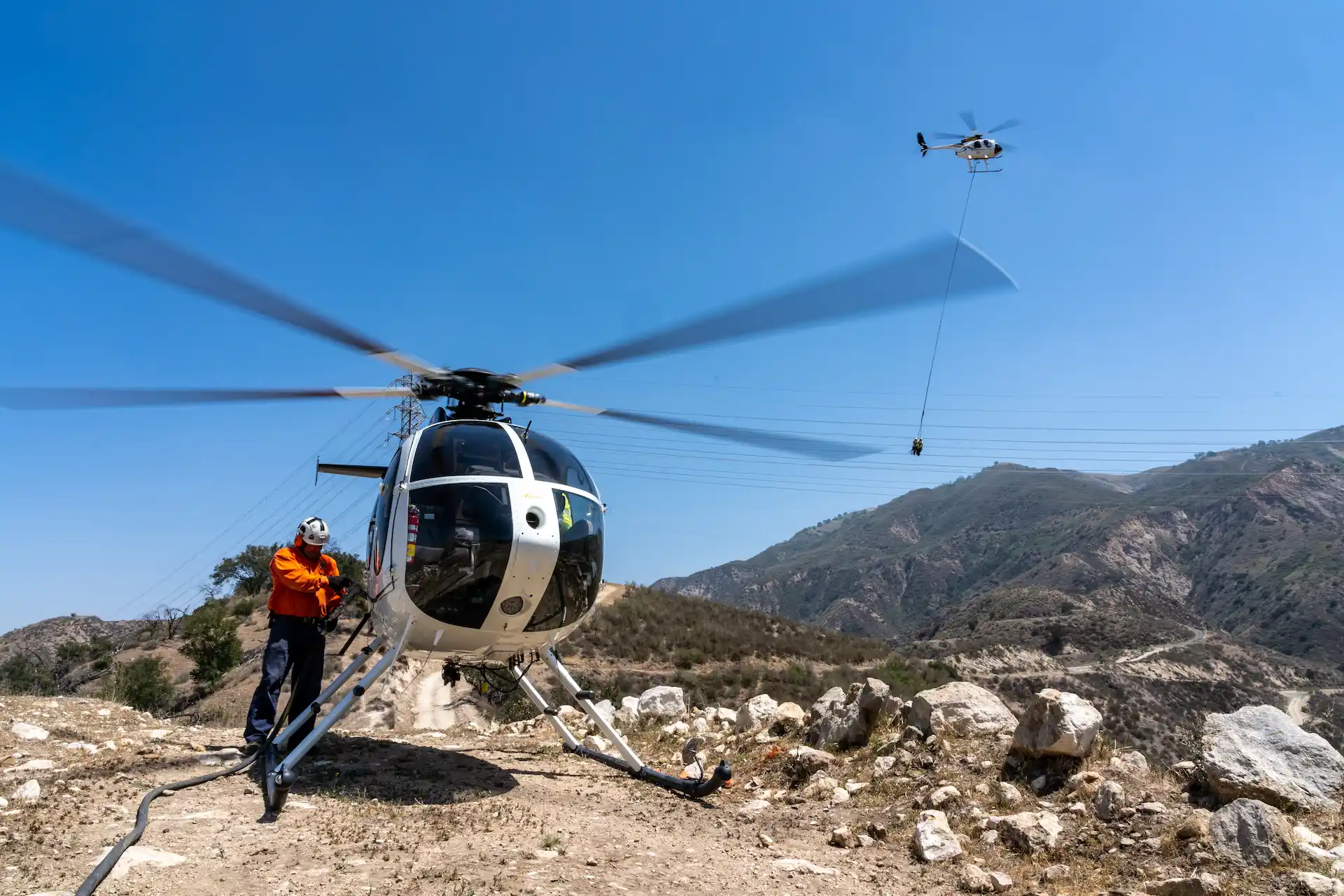
Inherent Risk
The wire environment has its inherent risks, and pilots have to be acutely aware of what is around them at all times and exactly what the particular risks look like. In recognition of that, Stewart explained that much time is spent in discussing the various hazards, how to avoid them whenever possible and how to mitigate any extreme consequences in instances where a hazard cannot be avoided. “Most of our operations involve some level of risk and the biggest challenge for pilots – especially newer pilots – is understanding what each risk is, what it looks like and how to mitigate it. This industry is heavily reliant on quality decision-making and CRM (crew resource management), and the majority of accidents we see stem from human decision-making. We strongly emphasize to our crews that they make decisions based on the mitigation of risk, and not on optimizing productivity on the job. As soon as a pilot focuses on productivity, the quality of their risk mitigation, decision-making and communication are all reduced,” he elaborated.
For the last few years, Wilson’s has been pushing the concept of human performance improvement, or HPI, which Stewart sees as a key component in ensuring safe operations in the wire environment. He explained that HPI is all about helping people understand that everyone makes mistakes, why they are made and how each individual personality has a unique approach to what risks they will accept, and why that is the case. The beginning of the HPI training includes a battery of tests to assess each individual’s personality and Stewart explained that the resulting profile helps each person understand how they perceive and deal with risks. “I have a tendency to act decisively and quite quickly and HPI helped me to understand that I have to look at things a little differently than someone who is innately prone to analyzing thoroughly before taking action. I now know that I have to be more cautious, deliberately slow myself down and concentrate on thoroughly analyzing the task,” he admitted.
With the bulk of their jobs being in construction, Wilson Construction does not carry out work on energized lines. If work is done on lines in service, they are always de-energized and grounded before work commences. The difference between working on energized and de-energized lines is subtle, however, as all lines are still treated as if they are energized. “We still bond onto the line and have to deal with static build-up and induction though,” Stewart pointed out. “All of our lines are synthetic and non-conductive, so we don’t have to deal with that to the same level as heavier aircraft flying with steel longlines, but we still get some minimal GPS errors from induction interference. We’re not relying on navigation at that point however, so it’s of no real concern.” The company carries out very little patrol work and Stewart pointed out that the hazards are very different in that mission. “In patrol work, the environment is constantly changing, and the pilot must constantly monitor and adjust to a very dynamic wire environment. In contrast and although we still have an inherent wire-strike risk in our normal operations, we are very familiar with the relatively localized wire environment in which we’re working.” He commented on the industry’s traditional view of patrol as an entry-level mission for newer pilots before they are cleared to operate on maintenance and construction flying but pointed out that it made no sense as the risk level for patrol flying is no lower, and may be even higher, than for those other tasks.
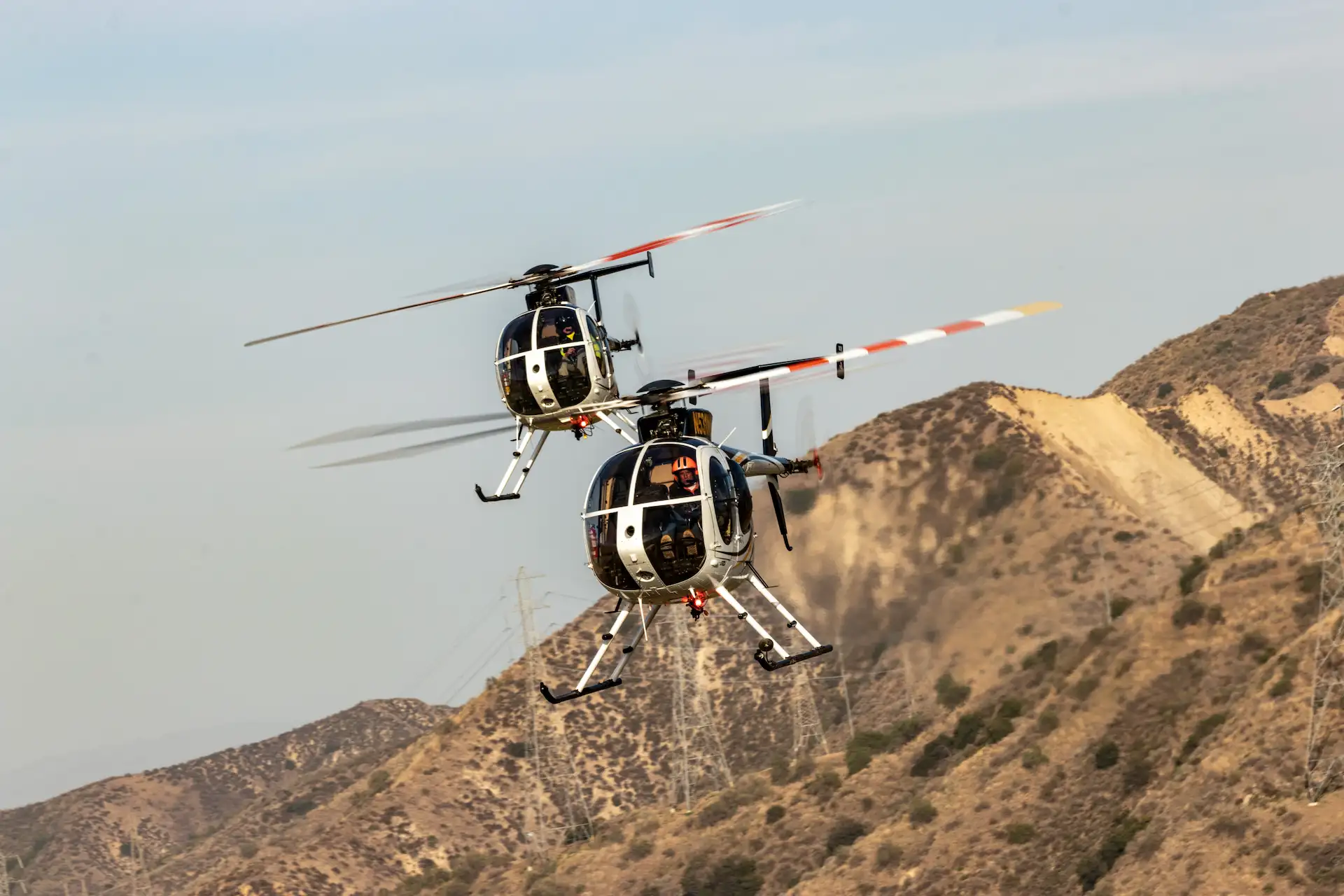
Stable Workforce
There is little turnover within the pilot ranks within the company and Stewart estimated the average Wilson pilot’s experience at around 8,000 hours. He stressed, however, that he placed far less value on the time recorded in their logbooks than on their attitude towards safety and the honesty of their assessment of their own ability. “I think a big one is their ability to say no. If a guy is prone to say yes, no matter what he’s asked to do, he’s elevating not just his own risk but also the risk to the whole operation. We have to be more apt to say no initially, then figure out all the ways in which we can safely get to the point where we can comfortably say yes. Experience doesn’t always directly translate to the right attitude and hours in the aircraft are not necessarily a good indicator of a pilot’s commitment to safety. Therefore, what I look for is a pilot’s attitude and his acceptance of our safety policies and procedures.” Above and beyond specific flight training and in addition to the HPI, CPR and usual staff training, pilots also receive wire environment training that focuses heavily on CRM, and grounding training so that they have a basic understanding of the electrical systems they encounter, the lines and all related components, and proper bonding and grounding of the lines.
Stewart also sees the bigger, industry-wide picture with regard to human factors training. “I wish there was a greater awareness of just how critical human performance really is in regard to what we do, and that attitudes matter,” he stressed. “It doesn’t matter whether it’s power and utilities, EMS or tours. Everybody has to recognize that it’s people that are doing the work. Humans are prone to making mistakes and we have to get to a place where the mistakes made are minimal, and those that are made are mitigated to where they don’t have catastrophic consequences.” He believes that the importance of the human component in helicopter operations across the board has been significantly under-appreciated and therefore under-represented in education for many years. Stewart has also trained most of the company pilots to be trainers for the linemen. This has the benefit of placing the trainer onsite in real time with the working linemen, able to answer any questions, observe and monitor their performance around the aircraft and immediately act to rectify any shortcomings or ill-advised actions. The familiarity between all personnel also minimizes the potential discomfort or stress in those situations. “I really encourage all the linemen to ask questions; to have a good look around the aircraft, the hooks and the longlines. I want them to understand and be familiar and comfortable with the whole operation and all the relevant equipment.”
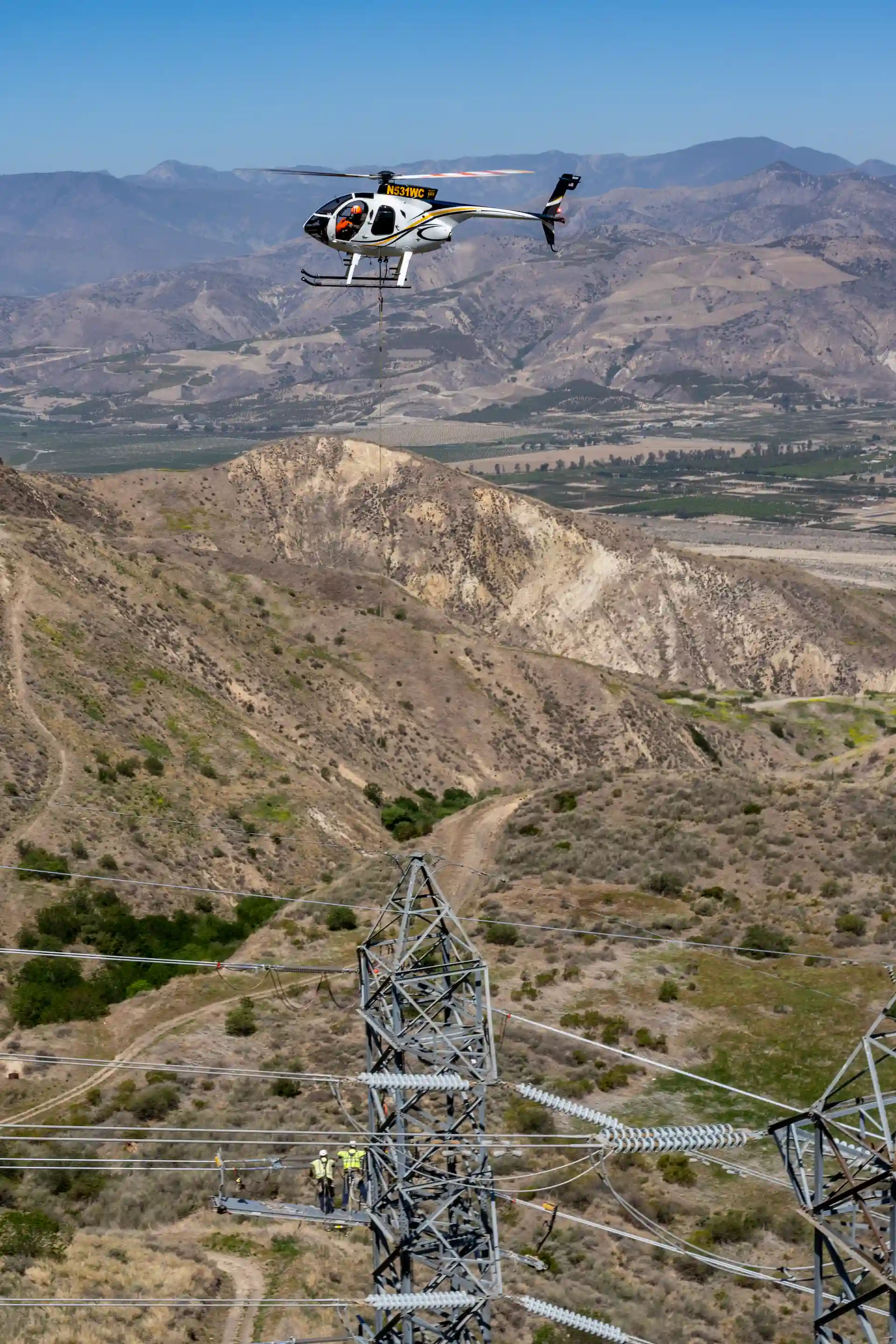
Steady As She Goes
At this point, little major change is forecast in the near the future, but Stewart advised that the company is always eying new technology that may add to its capability and increase safety. Drones have already been experimentally used to pull light sock lines but there are numerous operational and legislative issues to be worked out before there is any real likelihood of drone technology making any serious inroads into the power line construction industry. “The drone technology is already here but the drone is only a small part of it. You have to develop all the associated equipment, the traveller blocks and all the things that go along with pulling a smaller lighter line.” In the meantime, I think it’s a matter of just keeping our guys focused on what we do, keeping it simple and doing it well.”
For the last ten years or so, Wilson’s has been heavily involved with HAI and its UPAC (utilities, patrol and construction) committee. Stewart takes pride in participating and sees it as a major step forward in raising the level of safety throughout the industry. “That group has been instrumental in identifying a lot of these risks, sharing information and sharing lessons learned,” he remarked. “I think that being part of that group that works together collaboratively and has done so much to enhance our industry’s safety and awareness is something to be really proud of.”
